Why walking backwards can be good for your health and brain
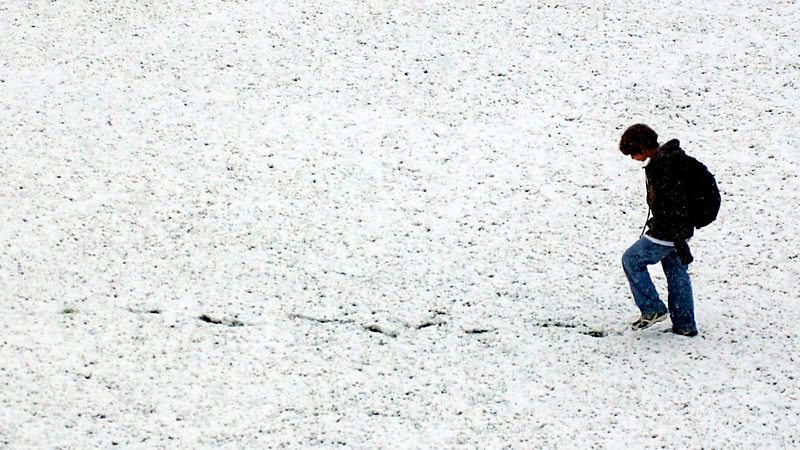
During the 19th Century, the activity of "retro-walking" was little more than an eccentric hobby, but today research is revealing it can have real benefits for your health and brain.
On an apparent wager to win $20,000 (about £4,250 at the time), a 50-year-old cigar-shop owner called Patrick Harmon embarked on a curious challenge in the summer of 1915 – he planned to walk backwards from San Francisco to New York City.
With the aid of a friend and a small car mirror attached to his chest to help him see where he was going, Harmon made the 3,900 miles (6,300km) journey in 290 days, apparently walking every step backwards. Harmon claimed the journey made his ankles so strong that "it would take a sledge hammer blow to sprain them".
Perhaps he was onto something.
According to research, walking backwards can have surprising benefits for both your physical health and your brain, as Michael Mosley recently explored in a recent episode of the BBC podcast and Radio 4 show Just One Thing.
Retro-walking, as walking backwards is known in academic circles, has a rich history. There are reports dating back to the early 19th Century of people walking hundreds, and sometimes thousands of miles, in reverse. Many were the result of impulsive bets and others were simply attempts to claim the bragging rights to a bizarre new record.
But due to the difference in biomechanics, backwards walking can actually bring some physical benefits. It is often used in physiotherapy to relieve back pain, knee problems and arthritis. Some studies even suggest that backwards walking can positively affect cognitive abilities such as memory, reaction time and problem-solving skills.
The practice of walking backwards for health purposes is thought to have originated in ancient China, but it has received attention from researchers more recently in the US and Europe as a way of improving sports performance and to build muscle strength.
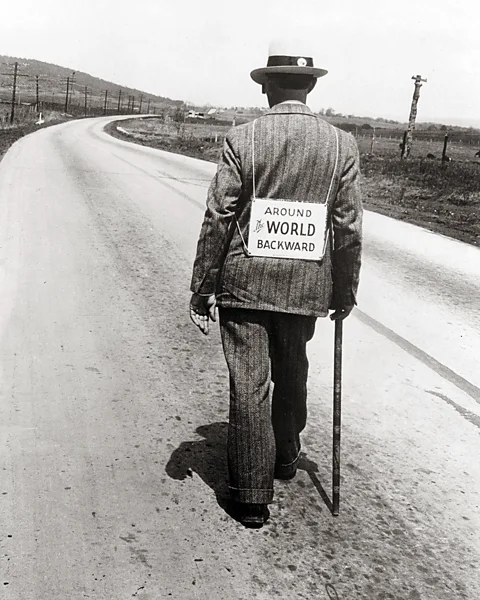 Walking backwards has been a popular activity for record attempts and friendly bets but research suggests it is good for our health too (Credit: Alamy)
Walking backwards has been a popular activity for record attempts and friendly bets but research suggests it is good for our health too (Credit: Alamy)Just one thing
If time is tight, what's the one thing you should be doing to improve your health and wellbeing? Listen to Michael Mosley as he reveals surprisingly simple tips that are scientifically proven to change your life.
Janet Dufek, an expert in biomechanics at the University of Nevada in the US, has been researching backwards locomotion for more than 20 years. She and her colleagues have found walking backwards for just 10-15 minutes per day over a four-week period increased the hamstring flexibility of 10 heathy female students. Backwards walking can also strengthen the muscles in the back responsible for spine stability and flexibility. And in another study led by Dufek, a cohort of five athletes self-reported a reduction in lower back pain after periods of backwards walking.
"Our research has shown that, indirectly, backward walking has some benefits relative to lower back pain simply because you're stretching the hamstrings," says Dufek. "Often one of the pieces that's tied to lower back pain is tight hamstrings."
Backwards walking and backwards running drills are already used in some sports training, particularly team and racquet sports which require the agility to quickly move forwards, backwards and laterally. As it reduces the stress placed on the knee joints while building strength, retro-running is also useful for helping to protect athletes from injury.
As well as athletes, retro-walking has been found to benefit the elderly, young, obese individuals, sufferers of osteoarthritis, and post-stroke patients with walking impairments. Backwards walking has also been found to burn more calories than walking forwards.
But why is it so beneficial?
"The biomechanics of walking backwards is very different than forward walking," Dufek told Mosley. "In backward walking, there is a reduced range of motion at the knee that can have some benefits for individuals who may be rehabilitating from knee surgery, for example."
One recent study found that the range of motion at both the hip and knee joints is greatly reduced during backwards walking. Whilst the forwards gait begins with heel contact, the backwards gait begins with toe contact and the heel sometimes never lowers to the ground. As a result, less impact is felt at the knee joint and it uses different muscles compared to normal walking.
It is actually the ankle joint which absorbs the most shock during backwards walking. Muscles activated in plantar flexion movement (used when pointing or standing on your toes) play a greater role in backwards walking to decelerate the ankle and absorb shock.
So it seems there is more than a grain of truth in Harmon's claim to superior ankle strength, even if it was likely he took a few train journeys along the way.
But the benefits don't end with stronger ankles.
Researchers have also found differences in the location of neural activity when stepping backwards compared to stepping forwards. The prefrontal cortex, responsible for cognitive skills such as decision making and problem solving, is especially active when stepping backwards.
One Dutch study tested 38 participants' ability to solve a Stroop test – which uses conflicting stimuli such as the word "blue" in red letters to interfere with how quickly people respond to a prompt – whilst stepping backwards, forwards or sideways. It found that participants stepping backwards had the fastest reaction times, perhaps because their brains were already used to performing an incongruous task.
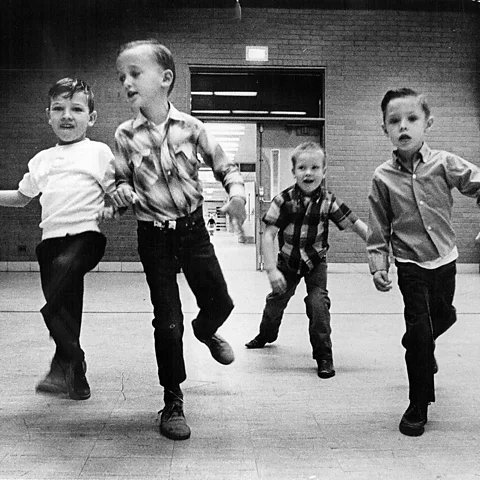
Another study strongly concluded that different forms of backwards locomotion, including backwards walking, watching a video of a backwards train journey, and even just imagining moving backwards, improved participants' ability to recall information.
With larger studies of healthy populations as well as those who are unwell starting to add to the mix of research on retro-walking, the evidence for its benefits and limitations are becoming clearer.
"I think that technology is driving a lot of biomechanics research, presently," says Dufek, "In the day when I was trained if you did a study that had 10 participants, that was huge. And now, I mean even me and my groups are doing work with big data because it's much easier to collect a lot of information, and get some very sound statistical outcomes."
But there's also an element of risk when it comes to retro-walking. Care needs to be taken to avoid unseen obstacles and there are cases where walking backwards during physiotherapy has resulted in falls and serious injuries.
There are also other ways of achieving the same results. Scientists in China, for example, found that tai chi and swimming are more effective rehabilitation activities for athletes with lower back pain than backwards walking, jogging, or no exercise at all.
But as Dufek says, there is another reason to give retro-walking a try – the novelty.
"I mean there are other ways you can stretch your hamstrings, you can just do hamstring stretches" says Dufek, "But, you may as well do something fun, right?"
Source: BBC























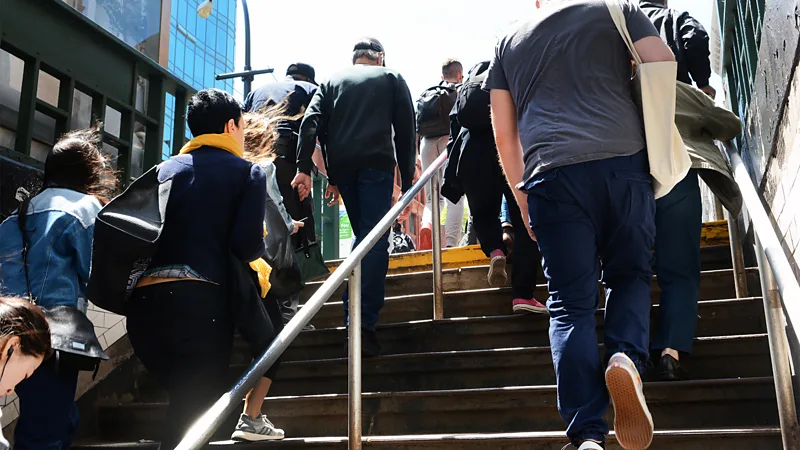
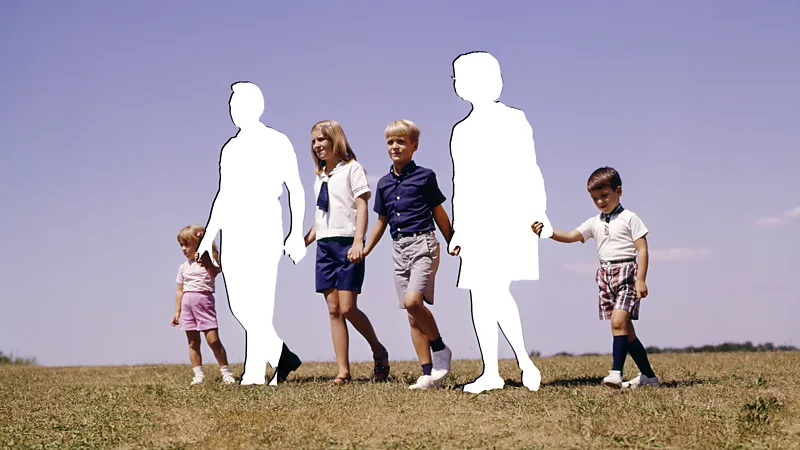























:max_bytes(150000):strip_icc():format(webp)/Health-GettyImages-ToothpasteOnAcne-4ea4cfedb2224b0fb601e61b59913d06.jpg)








